Lecture 6 - Finishing Genetics & DNA
Announcements
- Get exam from OH on T/H 7
- The final is everything from here on, no previous material.
- I don't need to care about most of what we did the first 5 weeks
Last Time
We talked about the differences between DNA and RNA:
- DNA to hnRNA is the process of transcription (Tc'n).
- hnRNA to mRNA is RNA Processing
- mRNA moving to the outside of the nuclear envelope is called the process of Nuclear Export
- mRNA to polypeptide is called translation (Tl'n).
- Polypeptide to protein is called folding.
Recall that the DNA composes our genotype while the protein encodes our phenotype.
DNA's most important use is information storage in the nucleus. On the contrast, the many types of RNAs "mobilize" this information for translation in the cytoplasm.
You should know each of the following:
- hnRNA
- mRNA
- tRNA (in translation)
- rRNA (in translation)
See these in action later in this lecture.
Transcription
In transcription, the RNA polymerase synthesizes a copy of one gene from a DNA template as a heterogenous nuclear RNA (hnRNA).
Nucleotides are always made 5' to 3' so RNA is made 5' to 3' off of the 3' to 5' DNA template strand.
A single DNA makes 10's of RNA which in turn makes 100's of RNA each, which makes ...
The proportion of how many, many proteins come from one DNA piece allows for a "pyramid" structure that you can see here.
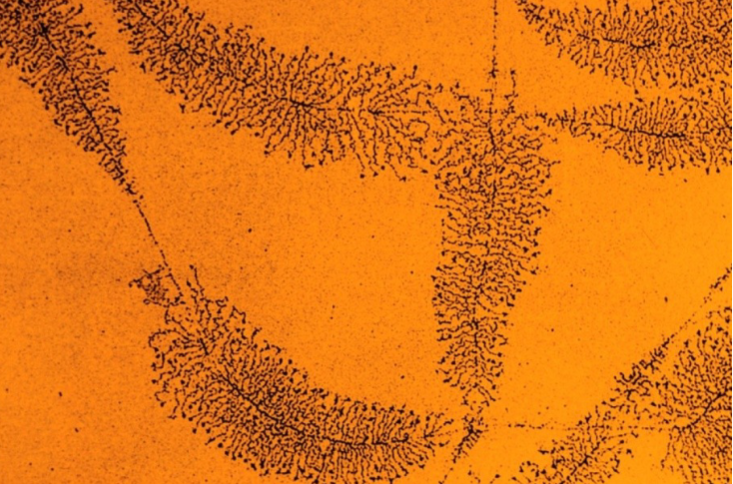
Here the 5' end is the top of the leaf, while the 3' end is at the base of the leaf. This is because the RNA "builds" up as the transcription process occurs near the front, leaving the generated RNA near the back.
The image above also shows empty parts of the DNA, a place where the gene terminates.
The process occurs in 3 stages: initiation (starts), elongation (goes), & termination (stops)
- Initiation: RNA polymerase binds DNA at the gene's promoter; the DNA helix unwinds; RNA synthesis begins
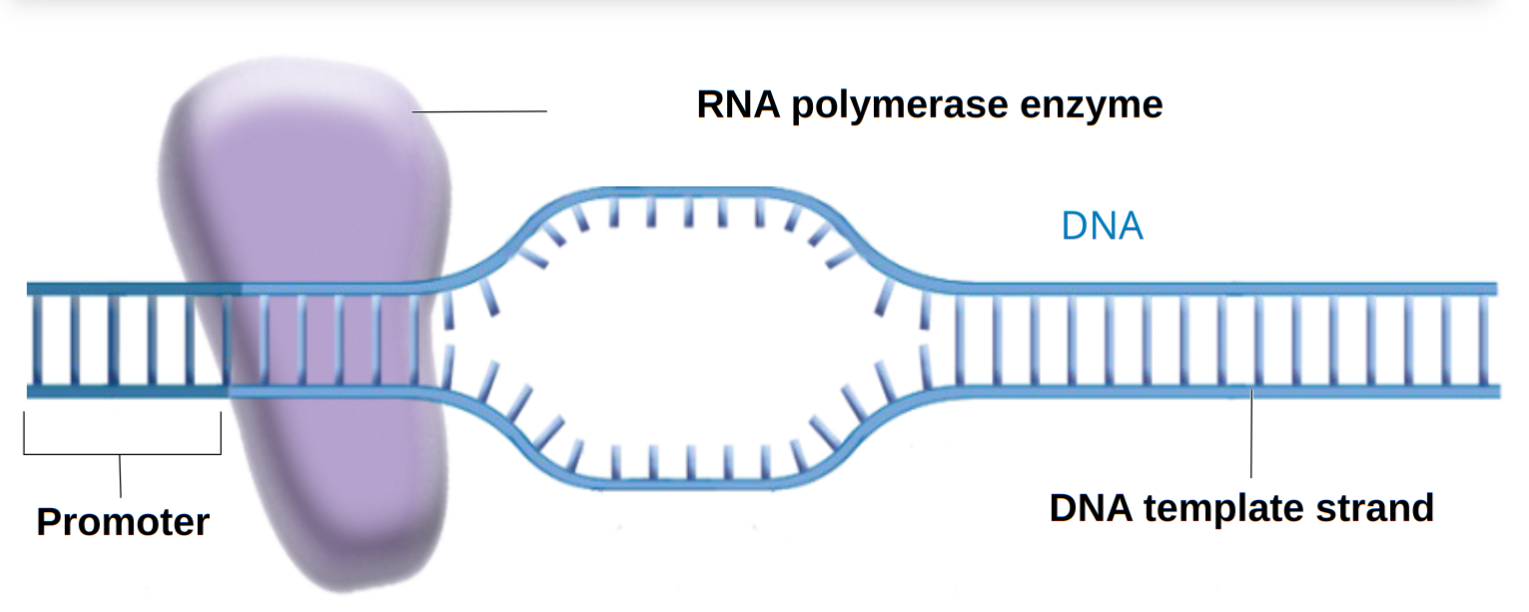
- Elongation: DNA threaded through RNA polymerase at Transcription bubble; RNA strand growing 5'
3'; A in DNA paired with U in RNA; 30-50 nucleotides per second.
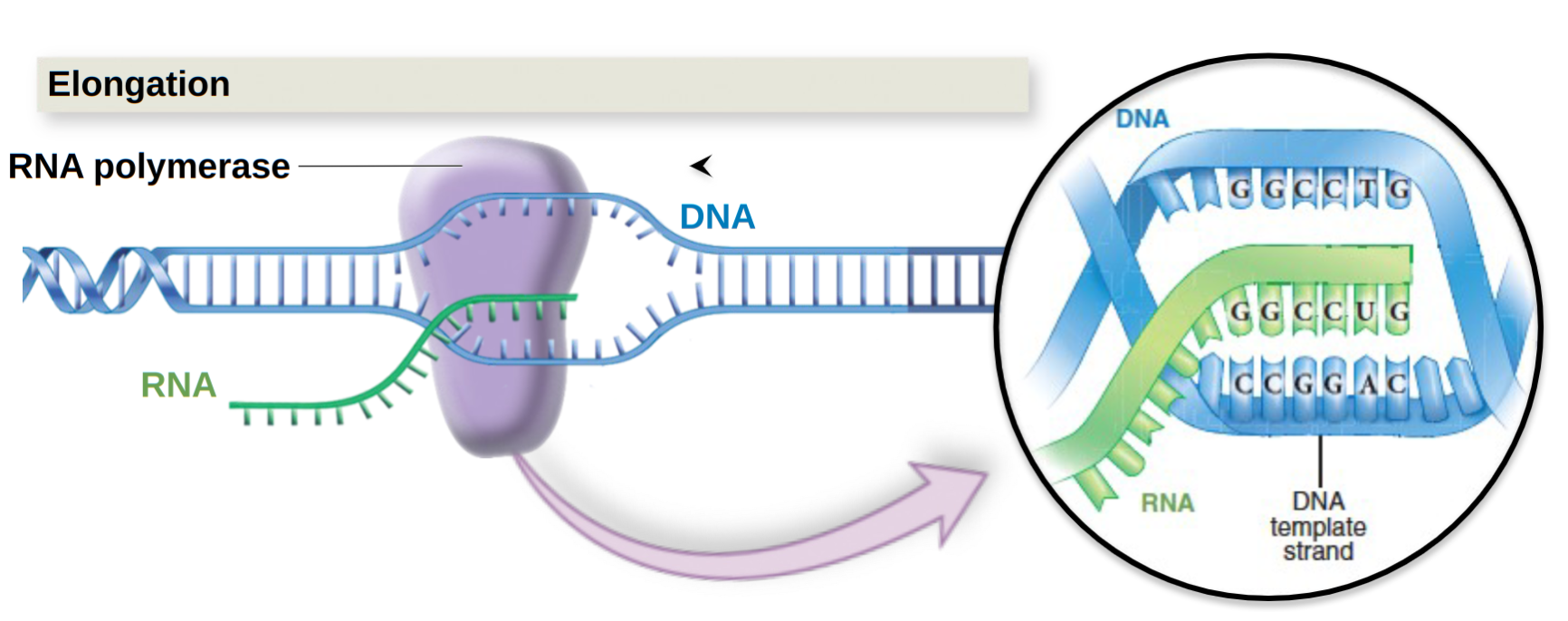
- Termination: RNA polymerase reaches "bumps" in terminator region and "falls off".
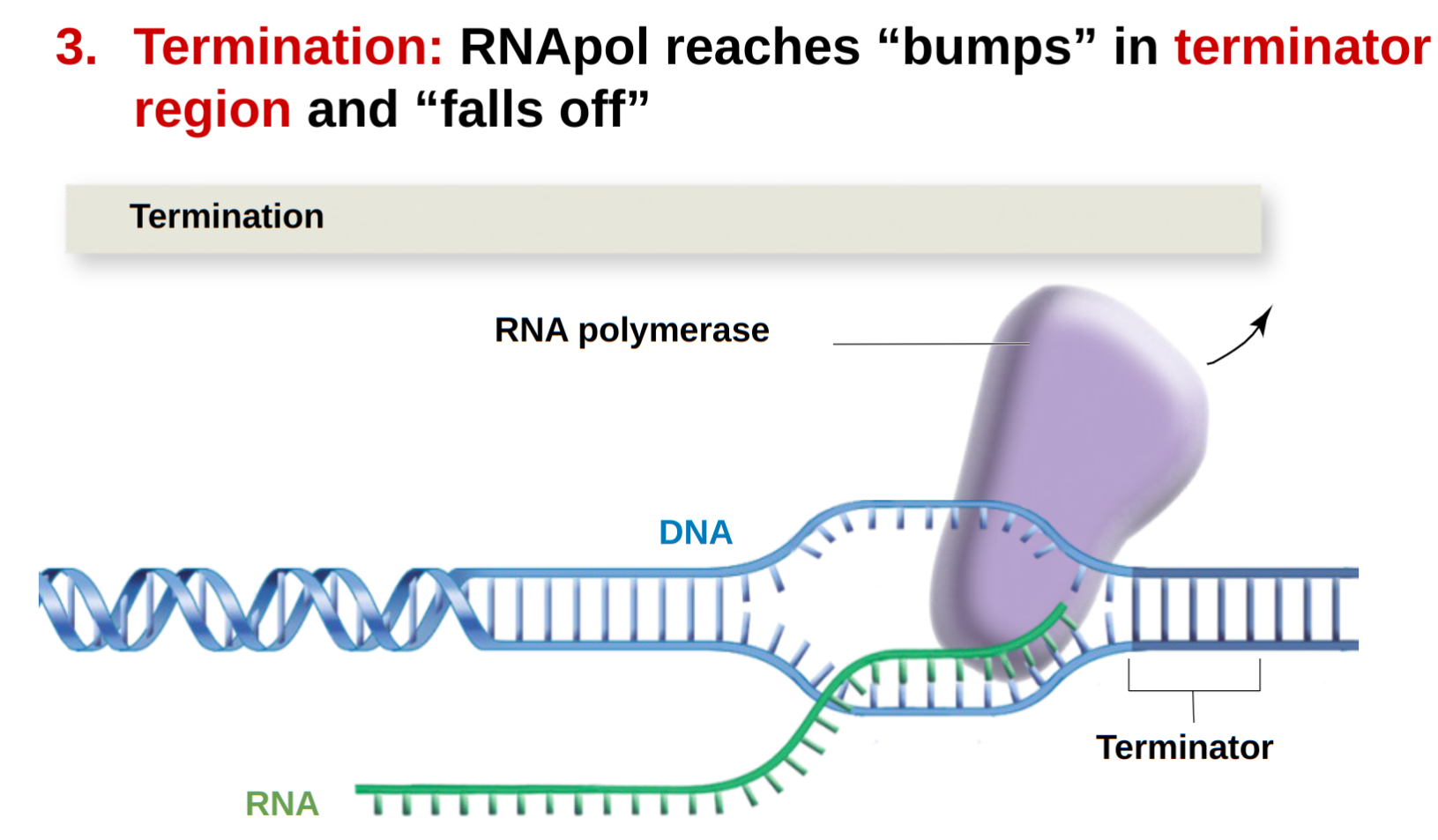
In bacterial cells, many genes are Transcribed at once, making a polycistronic RNA which codes for multiple proteins. Prokaryotic cells experience the same thing!
Genes and proteins are almost always colinear in bacteria, where earlier changes in the DNA affects the mRNA quickly, and thus the polypeptide chain as well. With colinearity, the number of nucleotides in the gene is proportional to the number of amino acids in the protein. This is the idea of how every 3 bases codes a unique amino acid, which chains to make a polypeptide chain, and was how it was discovered.
RNA Processing
In eukaryotic cells, we still have one more step after this for protein-coding messenger RNAs (mRNA): RNA Processing. Newly synthesized RNA called heterogeneous nuclear RNA must be modified before being fully functional.
Eukaryotic genes have comple internal organization. As the image above shows, the I's, or the introns (non-coding nucleotide sequences that are Tc'ed but not translated into the protein) are thrown out, while the exons are kept and read.
Many believed introns were composed of "junk-DNA". We now know introns are valuable via Evolutionary Conserved Regions or ECRs.
Introns will change between what type of cell we have. Introns contain DNA for other types of cells. What would be an entron in one cell may be an intron for another.
Newly syntehsized heterogeneous nuclear RNA must be modified before it is fully functional.
- Caps are added for initiation for translation and stability
- A poly-A tail is added for reduncancy for stability (in case of damage to the tail)
- This is an mRNA molecule (because now it can move without damaging the RNA internally)
- Introns are removed via a process called splicing
hRNA will have all the introns and exons; just the raw DNA data. mRNA will add the cap and poly-A tail as well as remove the introns by using sRNA on the ends of the introns to loop them together, thus removing them from the hRNA.
Remember that RNA processing is only possible in eukaryotic cells. The next step though is nuclear export into a polypeptide strand.
Difference RNA Molecules
In Translation (Tl'n), mRNA is translated into a stretch of amino acids by enzymes and other RNA molecules. Ribosomal RNA (rRNA) are a major component of the organelles (ribosomes) that construct proteins.
On the other hand, Transfer RNA (tRNA) are "interpreters" that read the mRNA code; insert amino acids to the growing protein.
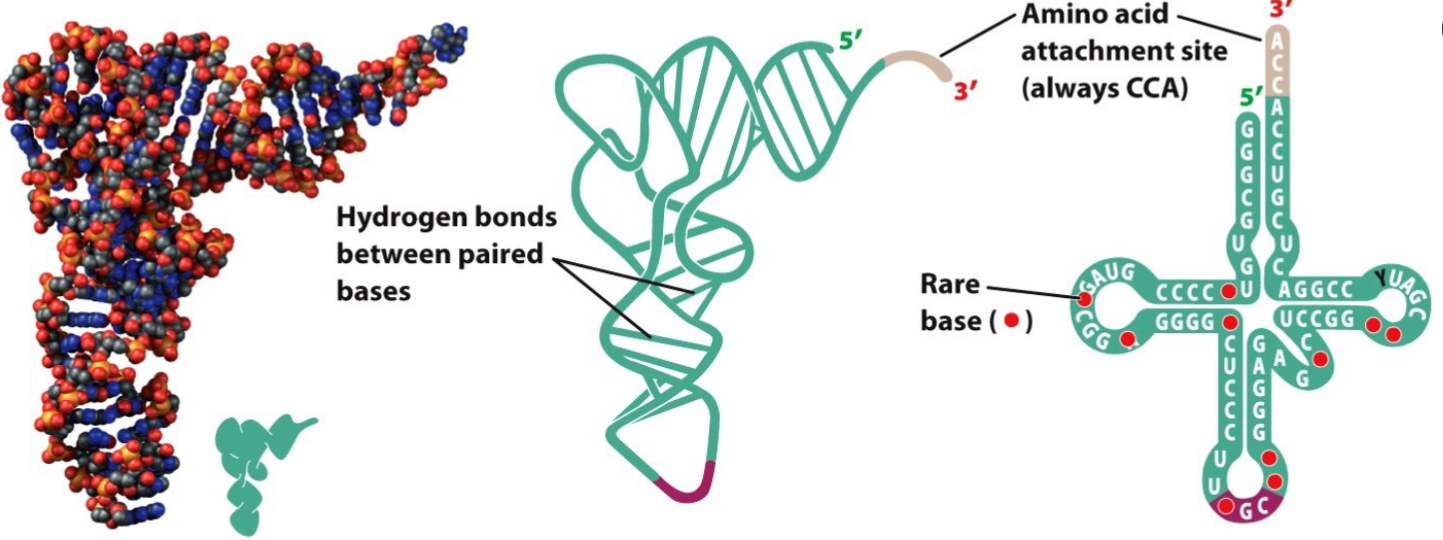
- tRNA takes on a characteristic cloverleaf structure (see figure above)
- Amino acid attachment site (always "CCA") at 3' end
- Each has a unique anticodon, which pairs to a codon on an mRNA during Tl'n
The Genetic Code
We'll get to this next time.